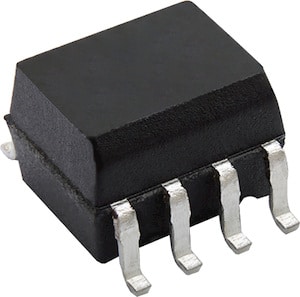The high-speed optocoupler enhances digital integration, improves safety, and increases efficiency in various industrial applications.

Vishay Intertechnology, Inc. has launched a 25 MBd high-speed optocoupler, the VOIH72A. It features a CMOS logic digital input and output interface to simplify integration into digital systems. Designed for industrial applications, it offers a low 6 ns maximum pulse width distortion and a minimal 2 mA supply current, operating across a wide voltage range from 2.7 V to 5.5 V and up to +110 °C.
The optocoupler features CMOS logic for its digital input and output, supporting a high-speed data rate of 25 MBd. It operates across a wide supply voltage range from 2.7 V to 5.5 V, ensuring flexibility in various power environments.
Its applications are crucial in improving digital system integrity and safety. The device is designed for galvanic isolation in digital systems, helping to prevent electrical noise and interference. It also effectively eliminates ground loops and isolates digital bus systems, thereby enhancing overall system stability and performance.
The press release says it employs a digitally controlled input LED driver and a high-speed IRED, paired with an optical photodiode IC detector, all housed within a compact SOIC 8 package. The optocoupler’s integrated digital input and output facilitate direct microcontroller connections, reducing the need for external driver stages and resistors, thereby lowering costs and streamlining design.
The company claims that the optocoupler excels in fast switching and low pulse width distortion and features a minimum common mode transient immunity (CMTI) of 20 kV/μs. These characteristics make it suitable for data communication and pulse width modulation, and it ensures high voltage safety in automation equipment, motor drives, and tools. Its efficiency in isolating electrical noise and minimizing ground loops while conserving energy enhances its applicability.
The optocoupler is RoHS-compliant and compatible with existing solutions. It supports broader voltage and temperature ranges, positioning it as an optimal substitute for both new and existing projects.






